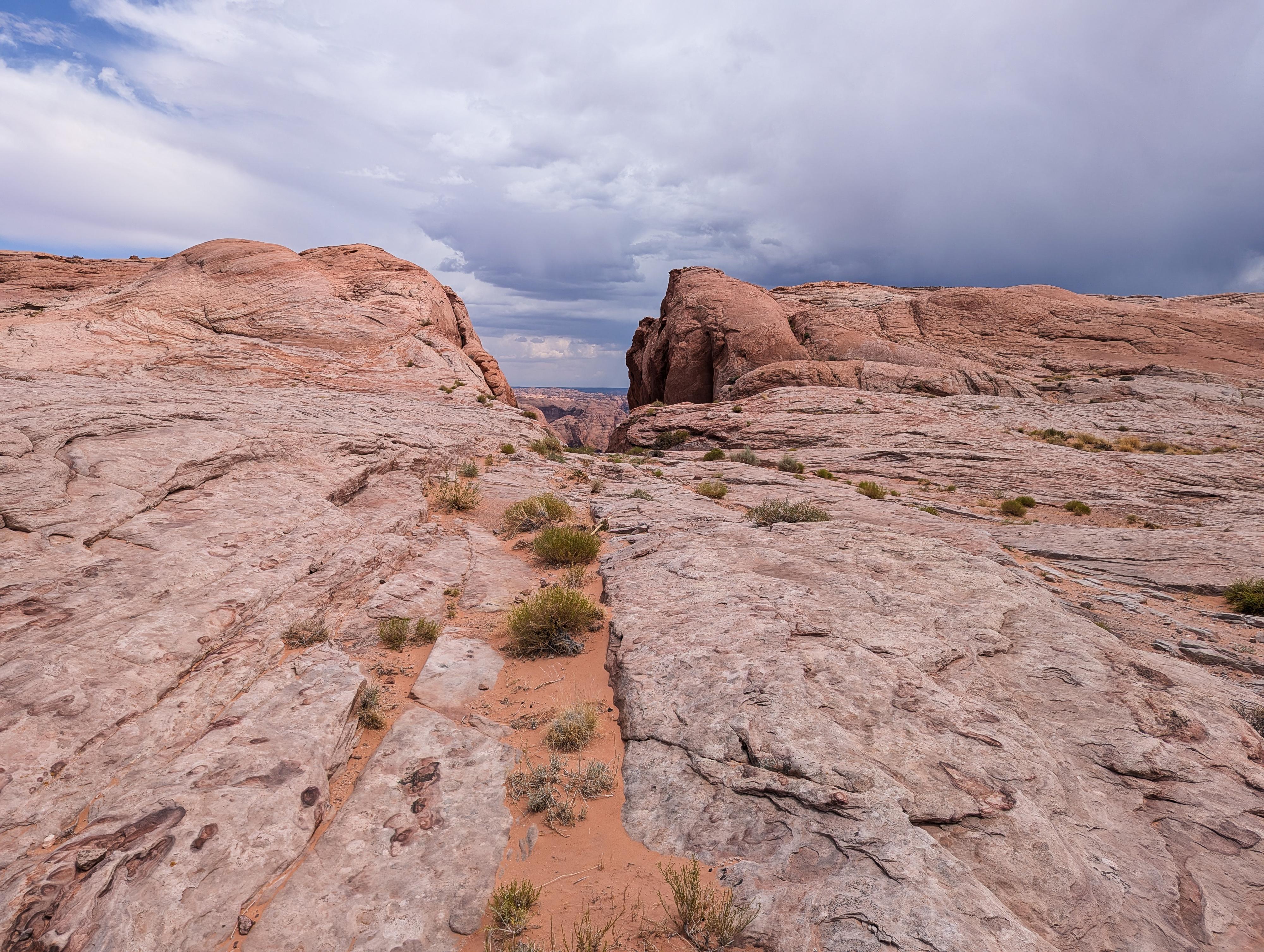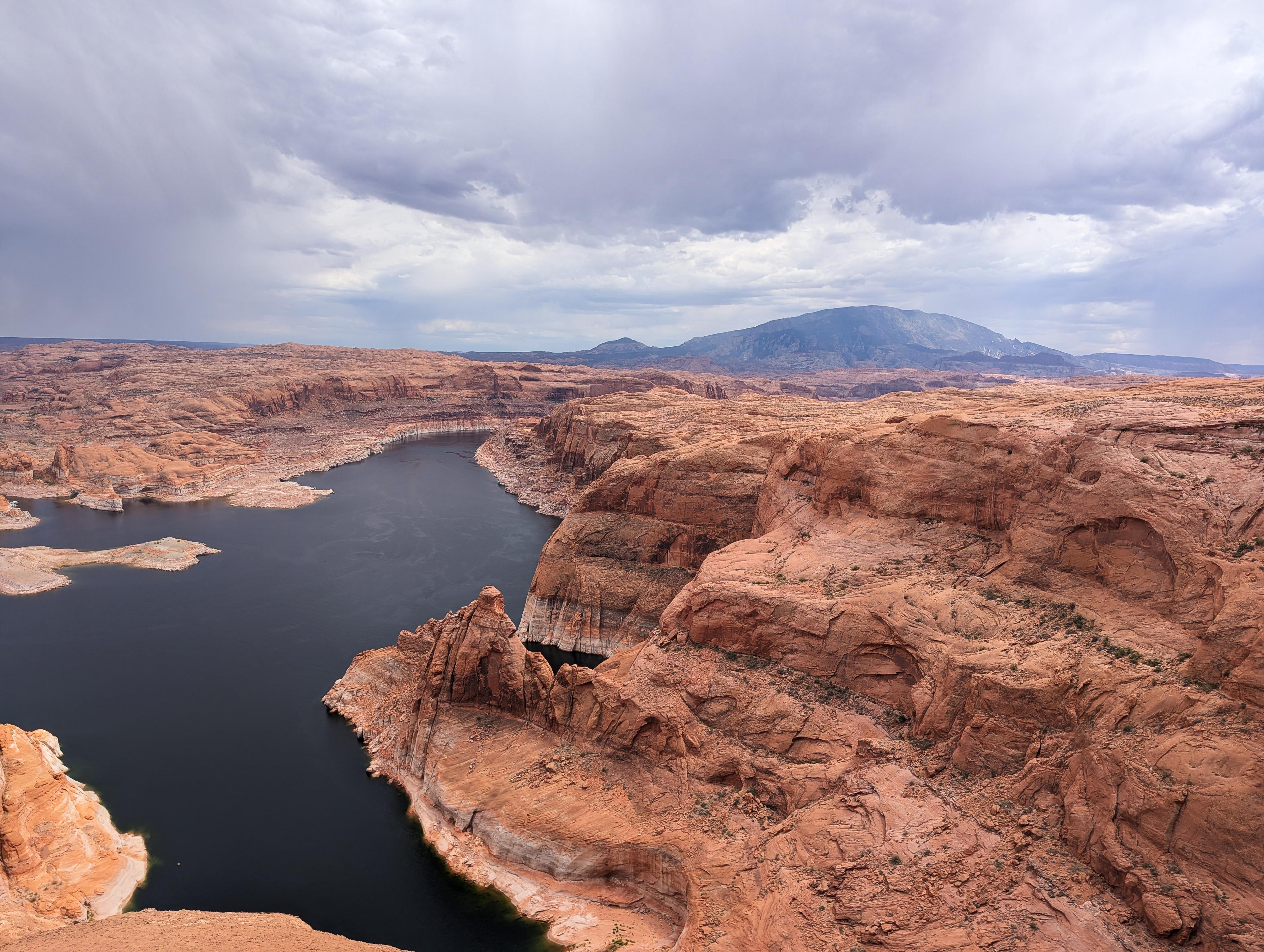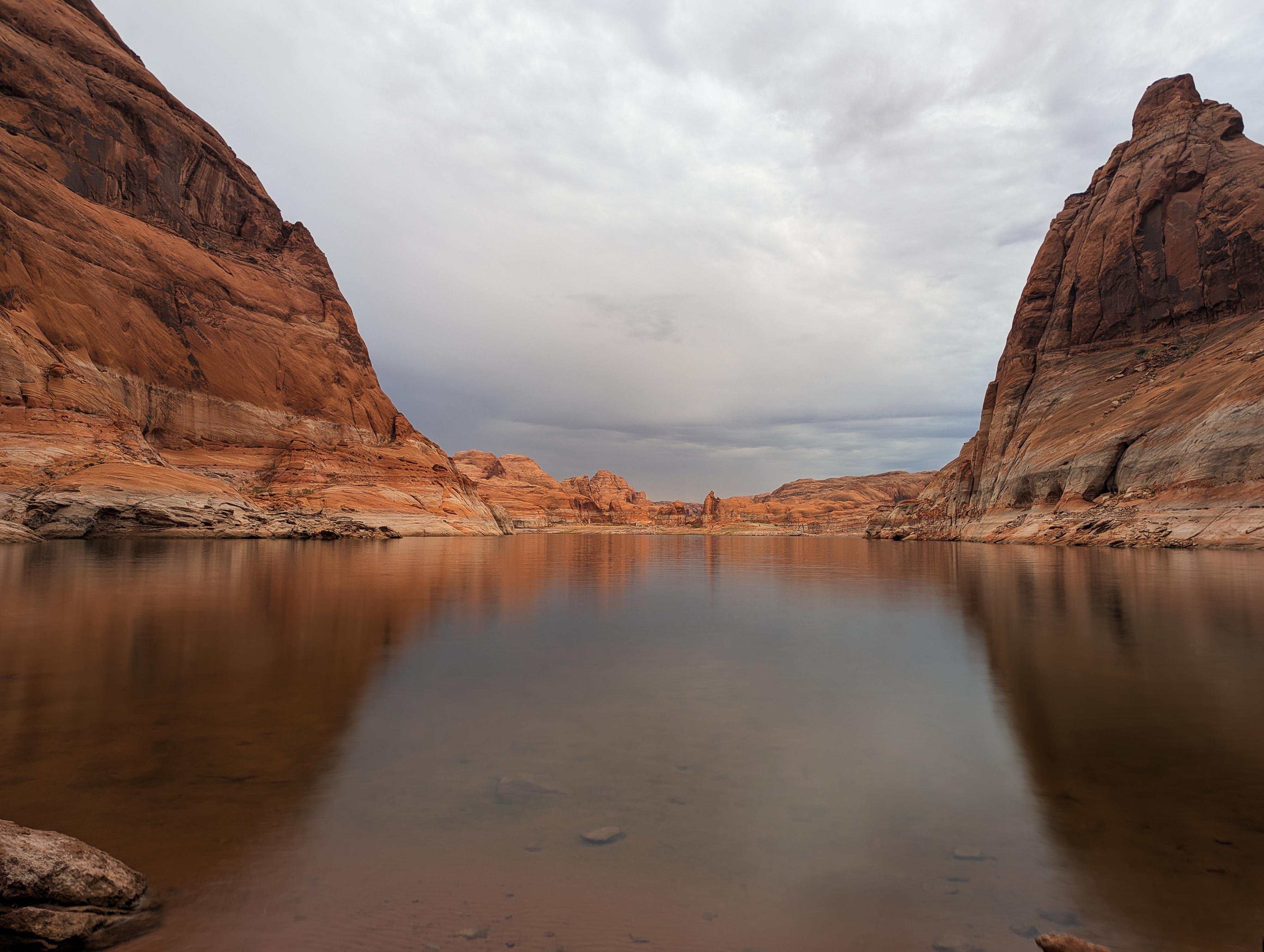
 Hole-In-The-Rock
Hole-In-The-Rock
Hole In the Rock Road
Overview
|
Thu 62 | 48 |
Fri 58 | 39 |
Sat 51 | 38 |
Sun 48 | 30 |
Mon 48 | 28 |
| View Full Weather Details | ||||
|
Thu 62 | 48 |
Fri 58 | 39 |
Sat 51 | 38 |
Sun 48 | 30 |
Mon 48 | 28 |
| View Full Weather Details | ||||
The tale of Hole-In-The-Rock is likely known, to some extent, to most Utahns. This is one of the most dramatic and epic Mormon settlement stories of all time. Today, it is about a 56 mile journey down a bumpy dirt road to reach the namesake Hole-In-The-Rock where early Mormon pioneers toiled against incredible odds, enduring inhospitable weather to complete a journey that would become legend. The 56 mile journey to the site takes a couple of hours to drive to today, one way, but still can feel arduous and long. The improbable route they engineered down to the Colorado River is a sight to behold and worth the effort to see.
The party encountered immense obstacles as they traversed the rugged terrain of the Glen Canyon area. When they reached a sheer sandstone cliff overlooking the Colorado River, they found a narrow crevice—later called the Hole in the Rock—which they painstakingly widened with blasting powder and hand tools over several weeks. This engineering feat allowed them to lower their wagons down the 1,200-foot drop to the river below using ropes, manpower, and ingenuity. After crossing the river, they continued eastward through equally formidable canyons and mesas.
After nearly six months of grueling travel—far longer than the six weeks they had planned—the expedition finally reached their destination and established the town of Bluff in April 1880. Despite the harsh conditions and loss of livestock, the pioneers succeeded in creating a settlement that would become a vital outpost in southeastern Utah. The Hole in the Rock route has since become a symbol of determination and pioneer ingenuity, and it remains an important historical and recreational landmark today.
It is astounding, but there was no loss of human life, and in fact, three babies were added to the population during the journey.
Getting There
Head east out of the town of Escalante about 5 miles on highway 12 until the well signed Hole in the Rock road on the south side of highway 12. Reset the odometer as you turn onto this road.
- Mile 0 - Hole-In-The-Rock Road Turnoff ( 12S 453167E 4175716N / 37°43'39"N 111°31'53"W )
- 4.5 miles - Small parking area on the north side of the road. This is the trailhead for West Big Horn/Big Horn Canyon. ( 12S 457467E 4170148N / 37°40'39"N 111°28'56"W )
- 8.0 miles - Parking area after a cattle guard. This is the Zebra/Tunnel trailhead. ( 12S 460681E 4165896N / 37°38'22"N 111°26'44"W )
- 12.3 miles - Devil's Garden turn off on the right. The trailhead is about 1/4 of a mile down this road. No camping, but a pit toilet. ( 12S 463808E 4160175N / 37°35'17"N 111°24'36"W )
- 14.45 Miles - Left Hand Collet Road on the right. ( 12S 465665E 4157425N / 37°33'48"N 111°23'20"W )
- 16.6 miles - Egypt road on the left. This access the Egypt and Neon trailheads ( 12S 468045E 4154960N / 37°32'28"N 111°21'42"W )
- 24.8 miles - Upper Dry Fork Trailhead on the right (south). This has a large parking area and pit toilet. ( 12S 478657E 4148035N / 37°28'44"N 111°14'29"W )
- 26.1 miles - Dry Fork Trailhead Road on the left (north). The trailhead is at the end of the road in about a mile. ( 12S 480198E 4146661N / 37°27'60"N 111°13'26"W )
- 30.9 miles - Red Well side road on the left. Follow this 1 mile to its end for the Red Well Trailhead. ( 12S 485669E 4141593N / 37°25'16"N 111°09'43"W )
- 33.1 miles - Chimney Rock side road on the left (north). ( 12S 487309E 4138502N / 37°23'36"N 111°08'36"W )
- 34 miles - Hurricane Wash Trailhead on the left. ( 12S 488275E 4137666N / 37°23'08"N 111°07'57"W )
- 36.3 miles - Fortymile Ridge side road on the left. This road goes to the Stock Tank and Fortymile Ridge trailheads commonly used for Coyote Gulch. This is also the road to Sunset Arch. ( 12S 489827E 4135057N / 37°21'44"N 111°06'54"W )
- 36.9 miles - Dance Hall Rock on the left. ( 12S 490766E 4134519N / 37°21'26"N 111°06'15"W )
- 40.8 miles - Sooner Rocks. Good primitive camping in the area. ( 12S 494749E 4131425N / 37°19'46"N 111°03'33"W )
- 41.7 miles - Willow Gulch side road on the left. To reach the Willow Gulch/Sooner Bench trailhead, follow this road to its end in 1.4 miles. It requires medium to high clearance. ( 12S 496002E 4130621N / 37°19'20"N 111°02'42"W )
- 45.7 miles - Small spur road on the right that goes to a wash. This is the Cave Point and Fiftymile Creek trailhead. There is OK primitive camping here as well. ( 12S 498172E 4127122N / 37°17'27"N 111°01'14"W )
- 48.2 miles - Spur road on the right. This spur road goes a short distance (about 1/4 of a mile) to Fiftymile Spring. There is excellent primitive camping here, as well as hiking on the formation. ( 12S 499425E 4124446N / 37°15'60"N 111°00'23"W )
- 50.6 miles - Davis Gulch Trailhead. The road beyond Davis Gulch is usually the roughest section of the Hole-In-The-Rock road. High clearance only, true high clearance 4-wheel-drive recommended beyond Davis. ( 12S 502303E 4122851N / 37°15'08"N 110°58'27"W )
- 53.6 miles - Closed side road on the left with two entrances. The second has a small spot to park off the road. This is the Clear Creek/Cathedral In the Desert trailhead. ( 12S 505608E 4123818N / 37°15'39"N 110°56'12"W )
- 56 miles - End of the road at Hole-In-The-Rock. ( 12S 508767E 4123334N / 37°15'23"N 110°54'04"W )
Route
From the trailhead, it is a very short walk over to the cleft that is the Hole-In-The-Rock. If you have time, it is very worthwhile to hike the full trail down to the lake.
Though it had wagons descend it at one time, it has since washed out and requires a bit of scrambling and route finding. Simply head down from the top, finding the easiest path over and around obstacles. Keep an eye out on the left, near the top, for a long ledge with graffiti on it. Please don't add to the graffiti.
When the pioneers descended this, it is significant to note, they had filled the bottom with sand and rocks to make a path for the wagons. Their wagons were about 70" wide, so as you walk down, you can imagine how much fill had to be put in at some spots. Since construction, the sand and fill have washed out, but there are still spots where you can see some chisel marks up 3-4' on the walls where they had to widen the spots just a bit to fit.
As the canyon widens a bit, the social trail heads left across the slope and some chiseled steps that came after the pioneers when the Hoskinini Mining Company was working in the area. It then descends to the lake In 2025, the lake edge had a nice sandy beach and another sign at the bottom. Return the same way.
Maps
| Trailhead |
12S 508775E 4123339N 37°15'24"N 110°54'04"W |



